Conservation pays: How a local company is turning Portage County trees into carbon credits
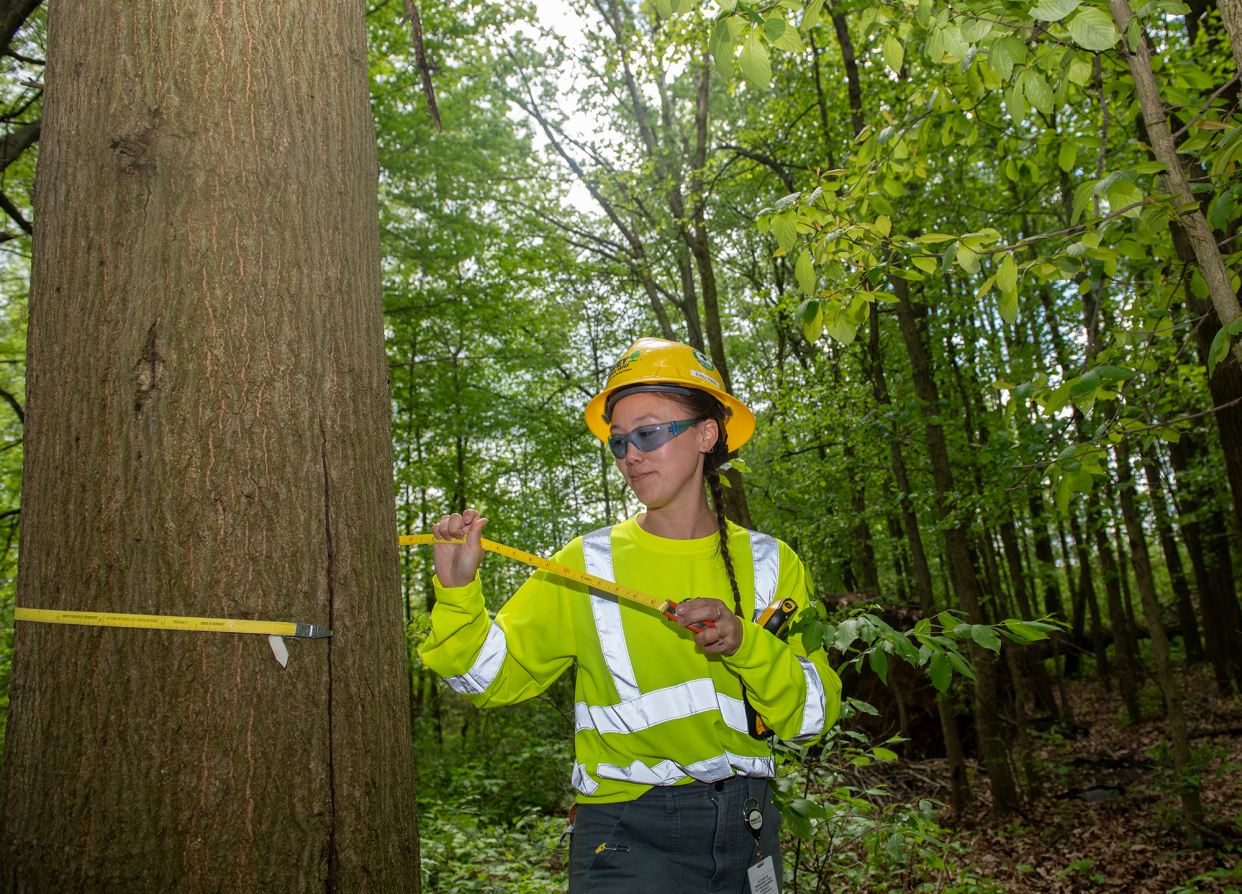
Walking through a majority oak-hickory forest in Kent, Emily Penn measures the diameters of trees and assesses the trees’ health.
Penn, senior environmental scientist at Davey Resource Group (DRG), a subsidiary of Kent-headquartered The Davey Tree Expert Company, is involved in an effort to inventory every tree with a diameter of 5 inches or more in this forest and two others that Davey owns in Portage County.
Getting good at guessing tree diameters, Penn said, is “the fun thing about looking at cylinders all day.”
But she said she always measures them.
Penn’s work here is part of DRG’s effort to preserve trees on about 22 acres of land between three sites that Davey owns — two in Kent and one in Brimfield Township.
Last year, the three properties’ nearly 2,500, 5-inch-diameter-or-wider trees were validated and verified in a program through which DRG received credits for preserving the forests.
DRG promised to preserve the forest remnants for 40 years, through 2063, but it can sell its more than 4,100 carbon credits to companies or organizations looking to offset their carbon emissions, said Sandra Albro, senior associate consultant in urban forestry at DRG.
“The price is variable on the carbon market, but right now, the average price for one ton of CO₂ equivalent is $40,” Albro said, adding that a credit is about “half a tree, give or take.”
But DRG is considering “retiring” its credits to offset its own carbon emissions rather than selling them, Albro said.
Meanwhile, Albro said the company is working to “develop regional networks for buying carbon credits” and assist landowners with developing carbon projects in urban and exurban forests.
That’s through DRG’s role on a grant team led by Seattle-based nonprofit carbon registry City Forest Credits (CFC), which received a nearly $2 million grant from the U.S. Forest Service in March. The team also includes the Northeast Ohio nonprofit Western Reserve Land Conservancy (WRLC) and the Georgia-Alabama Land Trust.
“We are developing a team of experts internally that are well-versed in the carbon registries with City Forest Credits,” Albro said. “We meet with them regularly to talk about potential and existing projects. And then we are working locally and in different cities where we have a presence across the country to help develop carbon projects that those clients can then sell.”
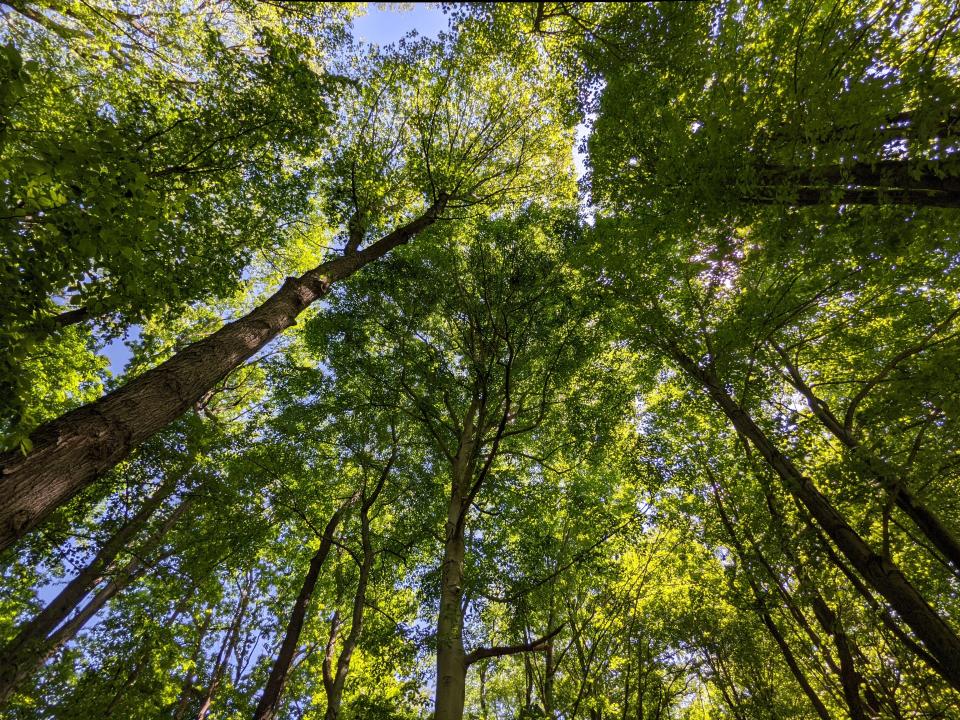
What are carbon credit programs?
According to the nonprofit group Conservation International, "a carbon credit represents a reduction of 1 metric ton in greenhouse gas emissions to compensate for 1 metric ton of emissions made somewhere else."
Carbon credit entities fund projects that reduce or remove carbon dioxide from the atmosphere to offset their own greenhouse gas emissions.
Properties used in carbon credit programs have traditionally had to be 5,000 acres or more, according to the National Association of State Foresters.
But the areas verified through CFC only need to be 15 acres or more, said WRLC Chief Conservation Officer Alex Czayka.
As far as land features and uses, Czayka said certain types of land that are protected by government agencies, such as wetlands and floodplains, cannot be used to receive carbon credits from CFC.
“And it does have to be primarily a forested habitat to be eligible for City Forest Credits,” he said.
Albro said land that is available for CFC verification also needs to face “a demonstrable threat of loss.”
“And that's the biggest hurdle to overcome in a carbon project,” Albro said. “So, if it’s a plot of land where housing developments have been built on all sides of it, that’s an example of a great project, unless that piece of land hasn’t been developed because it’s a wetland or something.”
Czayka said CFC also “requires a conservation easement or a deed restriction for at least a 40-year term.”
“Now, in our case, we're protecting properties in perpetuity because that's our business,” he said.
CFC issues “Carbon+ Credits” that account for not only trees’ sequestration of carbon but their cooling and cleaning of the air and sequestration of stormwater, Albro said.
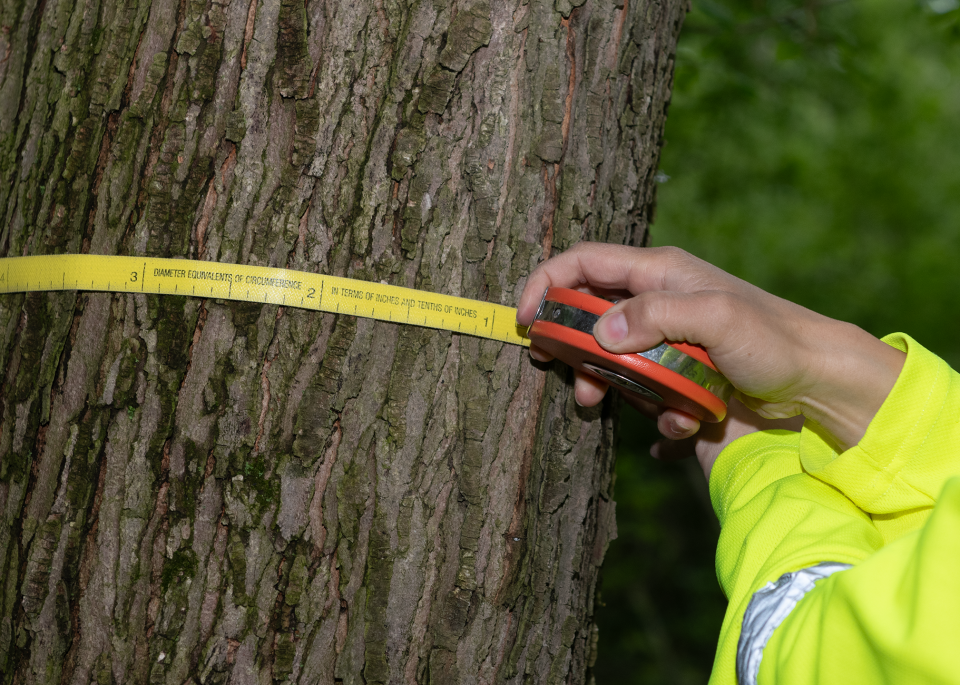
Carbon credit work in Northeast Ohio
CFC has issued credits to Western Reserve Land Conservancy for land that the conservancy has protected throughout its 29-county coverage area in Ohio, Czayka said.
As far as purchasers of carbon credits, Czayka said one customer of the land conservancy is Westlake-based manufacturer Nordson Corporation.
“So, there’s a couple layers of benefit to a company who’s buying these credits,” Czayka said. “They can obviously check the box for their sustainability goals, but they can also say, ‘We're also helping the greater community by contributing to a public green space that's going to be utilized by the general public.’”
DRG and Western Reserve Land Conservancy have worked together on carbon credit projects in Northeast Ohio, including in Geauga and Lake counties, Albro said.
Czayka said of Davey: “They’ve become a leader in this carbon credit space on the kind of for-profit consulting side. And, so, we have partnered with them on projects where they’ve helped us with the actual on-the-ground carbon quantification, so really measuring the carbon stock associated with an existing forest.”
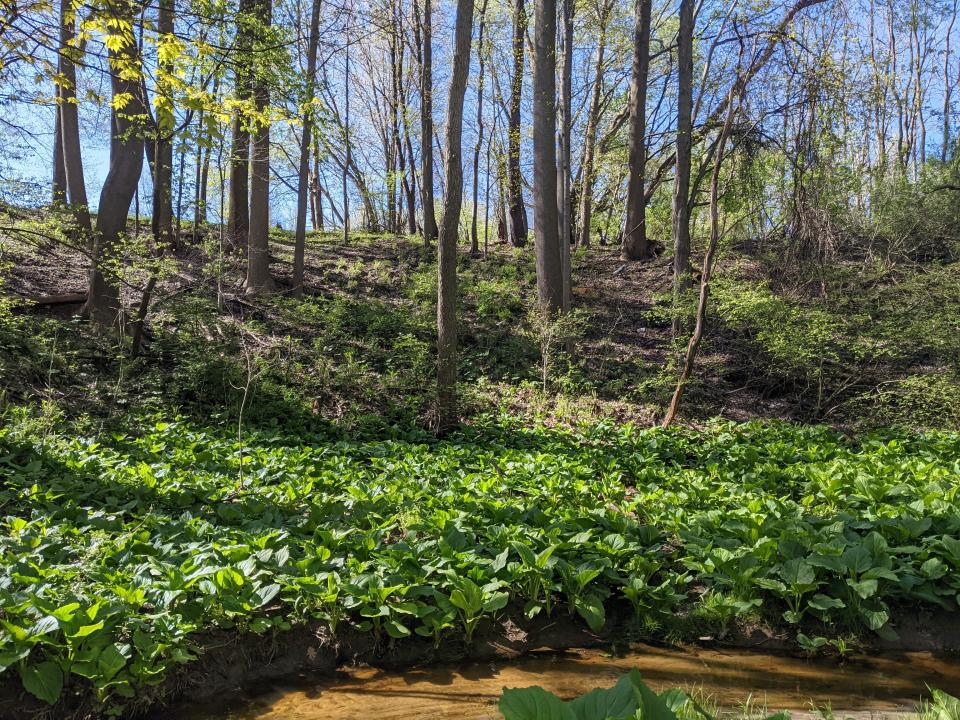
Developing regional carbon credit networks
Prior to receiving the U.S. Forest Service grant, Czayka said the land conservancy was already promoting carbon markets and providing education about them “to other land trusts and project operators throughout the nation.”
As for DRG, Albro said CFC is “looking for us as a national company to help fill any gaps that the other grant partners wouldn't be working in.”
For landowners, carbon credits can help pay for forest maintenance and new tree plantings, Albro said.
"We’re starting to see more interest in carbon credits and starting to reach a point where the revenue that’s generated from selling urban forestry carbon credits is enough to make that worthwhile for people who aren’t just conservation-minded," she said. “But the prices aren’t quite at a place where carbon credits would generate more revenue than putting land into development."
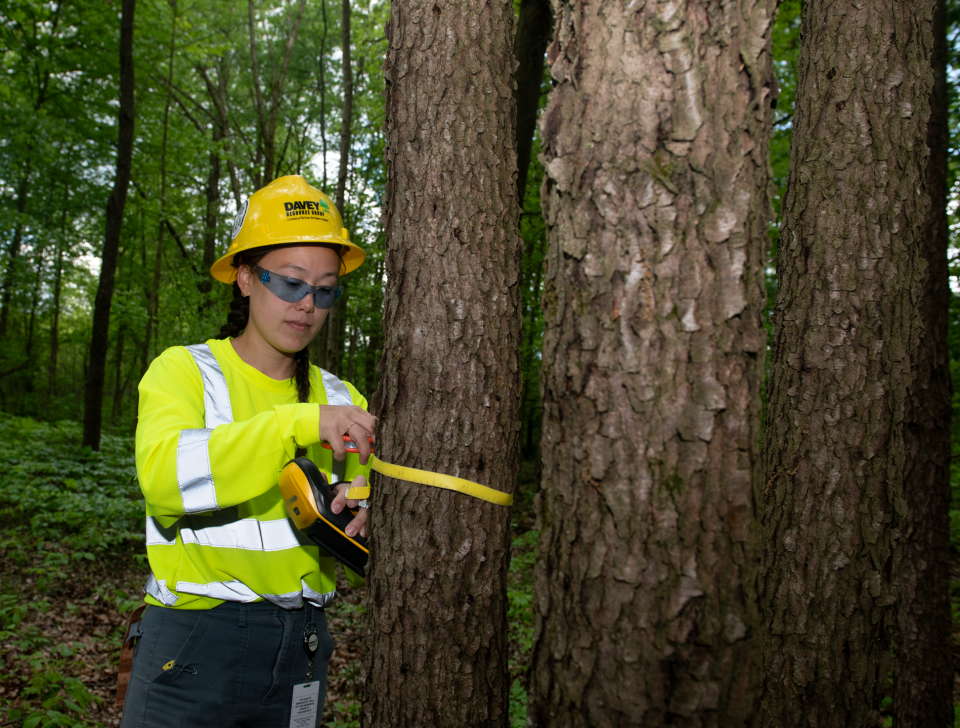
Davey Resource Group's carbon credit work in Portage County
Thanks to surveying work by Penn and others, DRG has been able to verify its three preserved forests in Portage County for carbon credits.
“We look at the species, the diameter and the condition of the tree to come up with an estimate for how much carbon is stored within each tree,” Albro said.
On a recent visit to a tree surveying site, Penn called attention to mayapple, a common perennial, flourishing in the woods.
Mayapples are native to Ohio and “have the white flower underneath them,” Penn said.
But Davey's preserved properties also include some endangered or threatened species, such as the Indiana bat, northern long-eared bat and little brown bat, according to DRG’s application linked on CFC’s site. Also listed are rambling dewberry and star sedge, both endangered plants in Ohio, and eastern tamarack, a vulnerable species in the state.
Plants, aside from the wider-than-5-inch-diameter trees, don’t factor into carbon credit markets, Albro said, but she added that “they do add to the benefits” of land preservation and called them “invaluable.”
“And it makes the case for why those parcels are needed to be preserved over the next 40 years,” she said.
Patrick Williams covers growth and development for the Akron Beacon Journal. He can be reached by email at pwilliams@gannett.com or on X, formerly known as Twitter, @pwilliamsOH.
This article originally appeared on Akron Beacon Journal: Davey preserves Portage Co. forests, joins national carbon credit team

